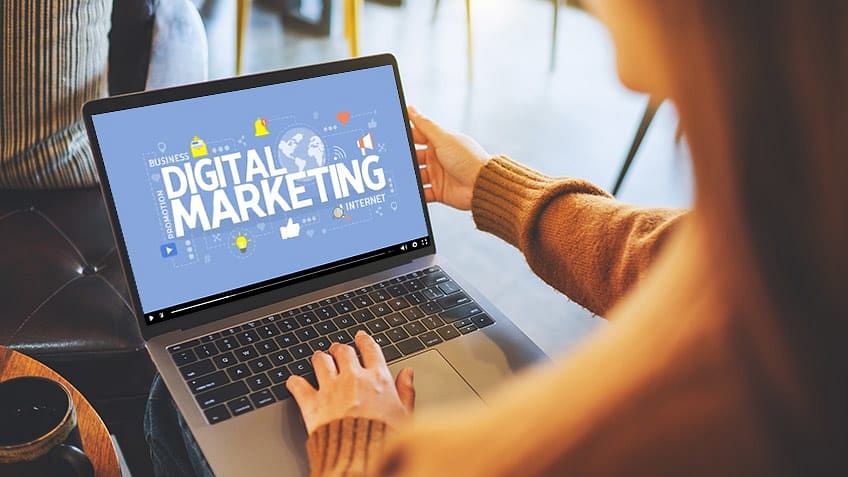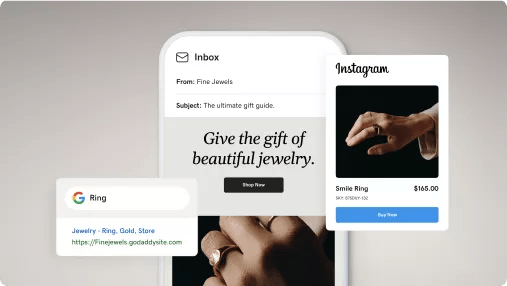Unleash Imagination with The Ad Firm Web Design Agency: Crafting Digital Masterpieces
Unleash Imagination with The Ad Firm Web Design Agency: Crafting Digital Masterpieces
Blog Article
Enhance User Experience and Drive Web Traffic With Receptive Internet Design
In today's electronic landscape, where customers are accessing web sites from a plethora of gadgets, responsive web layout has become more important than ever before. With its capacity to adapt and perfectly readjust to different screen sizes, responsive style not only improves individual experience yet additionally drives website traffic to your internet site.
Why Receptive Web Layout Issues
Responsive website design is an essential aspect of modern web growth as a result of its ability to make certain optimum individual experience across various gadgets and screen dimensions. With the expansion of smartphones, tablets, and other mobile devices, it has become essential for sites to adjust and give smooth capability no matter of the tool being utilized.
The main reason responsive website design issues is that it permits customers to have a consistent and satisfying searching experience, despite the gadget they are using. A responsive website automatically changes its layout, content, and design aspects to fit the display dimension and resolution of the gadget, guaranteeing that individuals can easily navigate and connect with the website with no trouble or disappointment.
In addition, responsive website design also plays a significant duty in seo (SEARCH ENGINE OPTIMIZATION) Internet search engine, such as Google, focus on web sites that are mobile-friendly and receptive in their search results page. By incorporating receptive design principles, internet sites can enhance their presence and ranking, leading to enhanced natural website traffic and possible consumers.

Boosting Individual Involvement Through Responsive Style
Optimizing user involvement is a crucial objective of receptive style, as it makes sure that individuals can quickly access and communicate with internet site web content on any gadget. With the boosting use tablets and smart devices, it is vital for websites to adapt to various display sizes and resolutions. Receptive layout enables sites to immediately readjust their format and material to provide a seamless individual experience across gadgets.
One of the primary methods responsive style improves individual interaction is by lowering lots times. With a receptive internet site, customers do not need to await different mobile variations to tons, resulting in much faster accessibility to web content. This better rate causes higher individual fulfillment and motivates them to spend more time on the site.
In addition, receptive style improves user engagement by boosting navigating and interface (The Ad Firm). When a website is made responsively, buttons and food selections are enhanced for touch interactions, making it less complicated for customers to navigate and interact with the site on their mobile tools. This user-friendly and user-friendly experience keeps users engaged and encourages them to explore even more of the web site
Furthermore, receptive style permits for much better content presence and readability. By adapting the design and font dimensions to different gadgets, responsive web sites guarantee that customers can easily review and understand the web content. This enhances customer engagement by lowering the need for scrolling or zooming to read the text.
Raising Web Site Traffic With Responsive Website Design
With the growing popularity of mobile phones, having an internet site that is receptive to various display sizes and resolutions is important for driving boosted web traffic. In today's electronic landscape, customers are accessing internet sites from a selection of tools such as smartphones, tablets, and desktop. Each of these devices has various display dimensions and resolutions, and if your internet site is not made to adjust to these variants, it can bring about an inadequate customer experience and a loss of possible web traffic.
Receptive website design guarantees that your site looks and functions optimally throughout all gadgets. By utilizing versatile grids, fluid images, and media questions, receptive style enables your site to automatically readjust its layout, navigating, and material to fit any display size. This means that customers will certainly have a seamless surfing experience regardless of whether they are using a tiny mobile phone or a large desktop computer computer.
Crucial Element of Reliable Responsive Layout
Efficient receptive style integrates a number of crucial elements that guarantee a smooth individual experience throughout different tools. One of these components is versatile grids and layouts. By utilizing relative devices like percentages rather than fixed systems like pixels, designers can produce formats that adapt and scale to fit different screen dimensions. This allows material to navigate here be displayed in a visually enticing and readable way on any gadget.
One more vital component is media questions. These allow designers to use various designs and layouts based on the qualities of the individual's tool, such as display dimension and orientation. By utilizing media inquiries, designers can enhance the discussion of material for each and every tool, ensuring that it is easily available and understandable.
Responsive pictures are likewise vital in reliable receptive style. Pictures that are as well big can reduce web page load times on mobile phones, while images that are too small might show up pixelated on bigger screens. By using methods such as responsive image resizing and lazy loading, developers can ensure that photos are suitably sized and maximized for each and every gadget.
Finally, efficient responsive design involves a mobile-first approach. This means prioritizing and how to find a website designer developing material for mobile phones initially, and then enhancing the style and increasing for bigger displays. This strategy ensures that one of the most essential web content is conveniently obtainable on smaller sized displays, while still offering an abundant experience on bigger devices.
Ideal Practices for Applying Responsive Internet Design
Applying responsive website design needs mindful consideration of different ideal practices to make sure an optimum customer experience across various devices. Right here are some vital best methods to adhere to when carrying out receptive website design.
Firstly, it is vital to focus on mobile users. With the boosting dominance of mobile tools, developing for mobile-first has ended up being essential. Start deliberately for smaller sized screens and then considerably enhance the layout for larger displays.

Another essential best practice is to maximize images for different display resolutions. Huge pictures can slow down the loading time of your website, particularly on smart phones with slower connections. Usage responsive photos that can be resized based on the tool's display resolution to enhance efficiency.
Additionally, test your site on different tools and screen dimensions to guarantee a regular and best web development seamless experience. There are different screening tools readily available that can help you determine any kind of problems and make essential adjustments.
Finally, focus on usability and access. Ensure that your web site is very easy to browse, with succinct and clear content. Make sure that your internet site is accessible to people with handicaps and follows ease of access standards.
Verdict
In final thought, receptive internet layout plays a critical duty in boosting individual experience and driving web traffic to internet sites. By taking on receptive design principles, sites can guarantee ideal checking out experiences throughout various devices, leading to boosted customer engagement.
Optimizing user involvement is a crucial objective of responsive design, as it guarantees that individuals can easily access and interact with site content on any type of tool. Responsive layout makes it possible for internet sites to immediately readjust their design and material to supply a smooth user experience throughout devices.
Additionally, receptive layout boosts customer involvement by boosting navigating and user interface.Receptive pictures are also vital in effective responsive style. By adopting receptive design concepts, sites can make certain optimum watching experiences throughout various tools, leading to enhanced user interaction.
Report this page